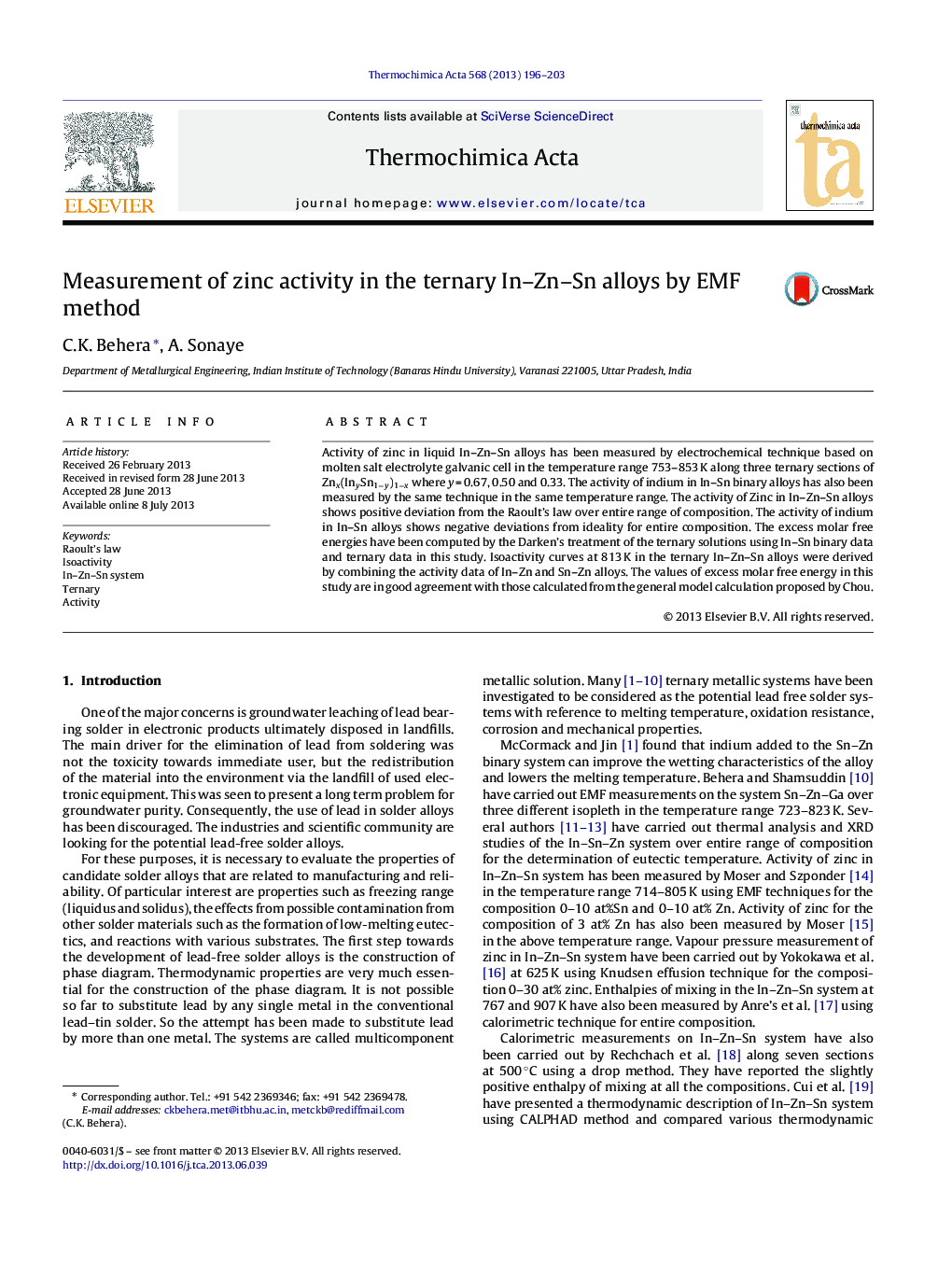| Article ID | Journal | Published Year | Pages | File Type |
|---|---|---|---|---|
| 673729 | Thermochimica Acta | 2013 | 8 Pages |
•Activity of zinc in the ternary In–Zn–Sn system has been measured in the temperature range 753–853 K by EMF method.•Isoactivity lines for zinc reflect the positive deviation from the ideality at 813 K.•The activity of indium in In–Sn binary system shows negative deviation from Raoult's law over entire range of composition.•Ternary excess molar free energies at 813 K are computed by Darken's treatment.•Calculated molar excess free energies for the ternary systems are compared with the Chou's theoretical model data.
Activity of zinc in liquid In–Zn–Sn alloys has been measured by electrochemical technique based on molten salt electrolyte galvanic cell in the temperature range 753–853 K along three ternary sections of Znx(InySn1−y)1−x where y = 0.67, 0.50 and 0.33. The activity of indium in In–Sn binary alloys has also been measured by the same technique in the same temperature range. The activity of Zinc in In–Zn–Sn alloys shows positive deviation from the Raoult's law over entire range of composition. The activity of indium in In–Sn alloys shows negative deviations from ideality for entire composition. The excess molar free energies have been computed by the Darken's treatment of the ternary solutions using In–Sn binary data and ternary data in this study. Isoactivity curves at 813 K in the ternary In–Zn–Sn alloys were derived by combining the activity data of In–Zn and Sn–Zn alloys. The values of excess molar free energy in this study are in good agreement with those calculated from the general model calculation proposed by Chou.
